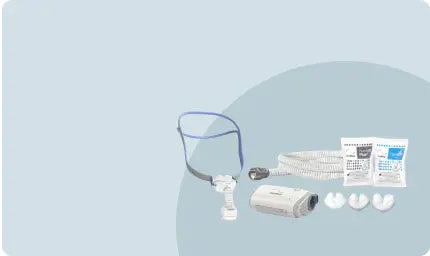Buy oxygen concentrators online with delivery at an affordable price
An oxygen concentrator is a medical device designed to produce oxygen from ambient air and deliver it to the patient in the form of compressed or liquid oxygen for oxygen therapy. It is capable of providing patients with oxygen in conditions where they have breathing problems or need additional oxygen in the treatment of various diseases.
Oxygen concentrators with different modes of operation are commonly used in hospitals, clinics, and at home. They work on the principle of air filtration, removing other gases and substances from the air, leaving only oxygen to be supplied to the patient. They have different modes of operation that provide patients with oxygen at different concentrations, depending on their needs and doctor's recommendations.
Home oxygen concentrators for respiratory treatment are usually quite mobile, easy to use and maintain, which allows them to be used at home for long-term patient therapy. They are an important element in the treatment of a variety of chronic diseases of the lungs, heart and other organs, in almost any situation where respiratory oxygen treatment or therapy is required.
High-tech efficient oxygen concentrators for home use
Oxygen concentrator technology.
An oxygen concentrator is a medical device used to provide oxygen therapy to patients with respiratory failure or other diseases where additional oxygen supply is required.
The main components of an oxygen concentrator:
- Compressor. This is a device that provides air compression and directs it to the next stages of oxygen purification and concentration.
- Air conditioning and purification equipment. The air entering the concentrator is cleaned of dust, dirt, and moisture to prevent contamination of internal components and ensure efficient operation of the device.
- Adsorber or membrane. This is a key element that separates oxygen from air. Adsorbers use a chemical process of oxygen absorption, while membranes pass oxygen through micropores, separating it from other air components.
- Filters for oxygen purification. After passing through the adsorber or membrane, oxygen can pass through additional filters to remove residual contaminants and moisture.
- Electronic control unit. This is a control device that monitors the operation of the concentrator, measures the oxygen level, regulates the flow, and has other control functions.
Environmentally friendly oxygen concentrators operate on the principle of physical or chemical extraction of oxygen from the air and its supply to the patient through special masks or tubes. After passing through various stages of purification and concentration, the oxygen becomes suitable for medical use.
Compact oxygen concentrators for mobile use - a large selection
Varieties of oxygen concentrators.
- Nasal. Supply oxygen through the nose. Special tubes are placed in the patient's nose. They are commonly used for small flows of oxygen designed for easy breathing. They stand out for their ease of use and light weight, which makes them popular among patients.
- With masks. Oxygen is supplied through special masks that are worn on the patient's face. They are used by patients who have difficulty breathing through the nasal ducts or who need large flows of oxygen.
- Pulsatile. They supply oxygen in a pulsating rhythm, triggered by the patient's inhalation. They are effective for people who do not need a constant supply of oxygen. They ensure the preservation of oxygen, as they do not consume it unnecessarily.
- Combined. Combine the functions of a constant flow and pulsatile flow of oxygen. They provide patients with a choice between modes of operation depending on their needs.
- Flow. Provides a steady flow of oxygen regardless of the patient's breathing phase. They are used by people with high oxygen requirements or those who require oxygen continuously.
Highly effective oxygen concentrators for the treatment of respiratory disorders
When will oxygen concentrators be most useful and even irreplaceable?
They help fight various respiratory problems:
- Chronic obstructive pulmonary disease. They provide supplemental oxygen to patients with COPD to make breathing easier and reduce symptoms such as dizziness, shortness of breath, and general fatigue.
- Pulmonary fibrosis. Patients with pulmonary fibrosis often experience a lack of oxygen to the blood due to lung damage. These devices help direct its flow to the lungs to make breathing easier.
- Cardiovascular diseases. Patients with cardiovascular disease may have circulatory problems, which leads to insufficient blood saturation. Devices help to provide sufficient oxygen to the body.
- Obstructive sleep apnea syndrome. People with OSA may have an obstructed airway during sleep, which leads to insufficient blood saturation. In these cases, they can be used in conjunction with CPAP machines to facilitate breathing.
- Bronchial asthma. In cases of bronchial asthma, when airway spasms lead to restricted airflow, they help provide sufficient oxygen levels to reduce symptoms.
Oxygen concentrators with a built-in humidifier are extremely useful for patients with various respiratory conditions who need supplemental oxygen to help them breathe easier and improve their quality of life.
Buy high quality portable oxygen concentrators - benefits and features
Benefits of a home oxygen concentrator.
These devices have several functional advantages in the context of respiratory therapy:
- Efficiency. They provide a stable flow of oxygen, which allows the patient to receive the required amount of oxygen continuously for a long time.
- Reliability. They are reliable in operation and have a long service life. They are manufactured using high quality materials and components, which ensures their resistance to wear and excellent performance over a long period of time.
- Mobility. Some models of home devices are portable and easy to transport, which allows patients to receive respiratory therapy even when traveling.
- Cost-effectiveness. Compared to other methods of respiratory therapy, such as oxygen cylinders, the use of an oxygen concentrator is a more cost-effective procedure in the long run, as it does not require constant expenses for the purchase of new cylinders.
- Ease of use. They are usually quite easy to use and maintain. Most models have a simple interface and are easy to set up.
- Comfort. Patients who use them feel an improvement in their quality of life, as they receive the necessary oxygen continuously and in sufficient quantities, which makes their breathing easier and helps to normalize their overall health.











